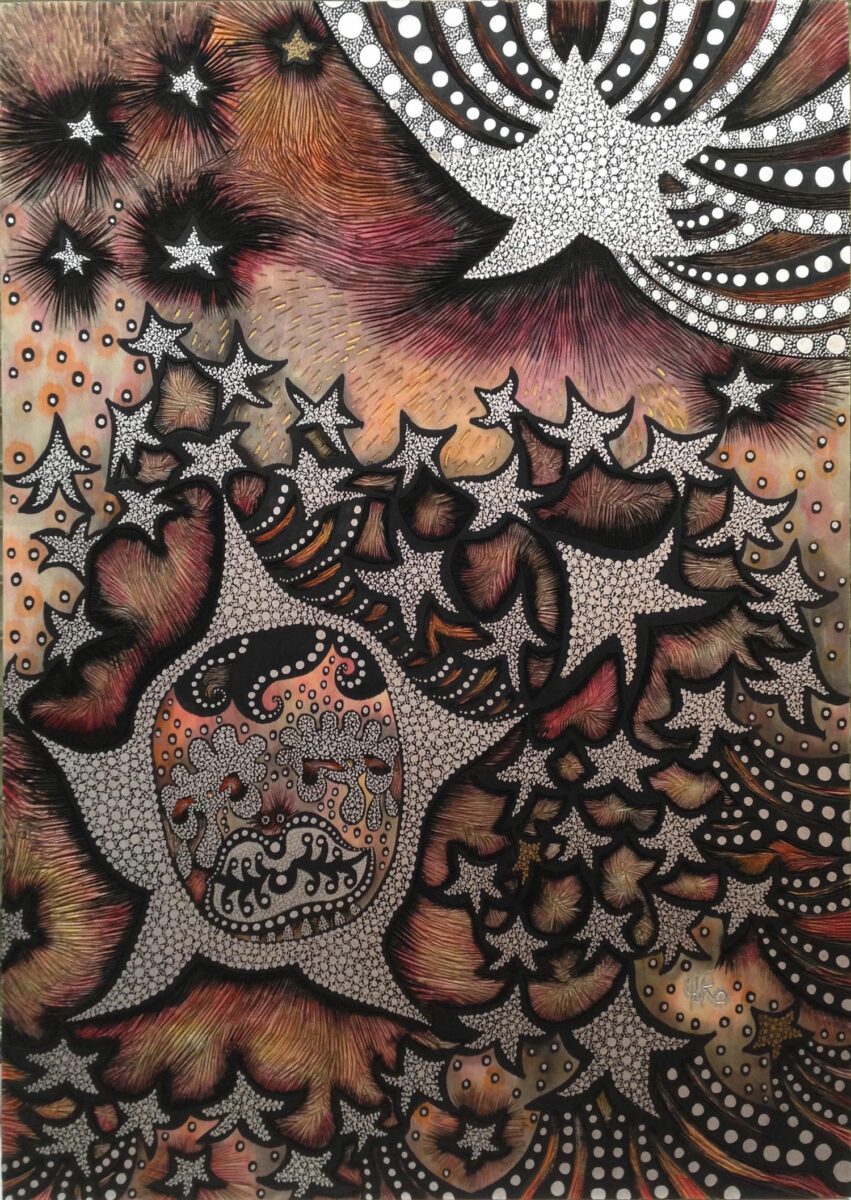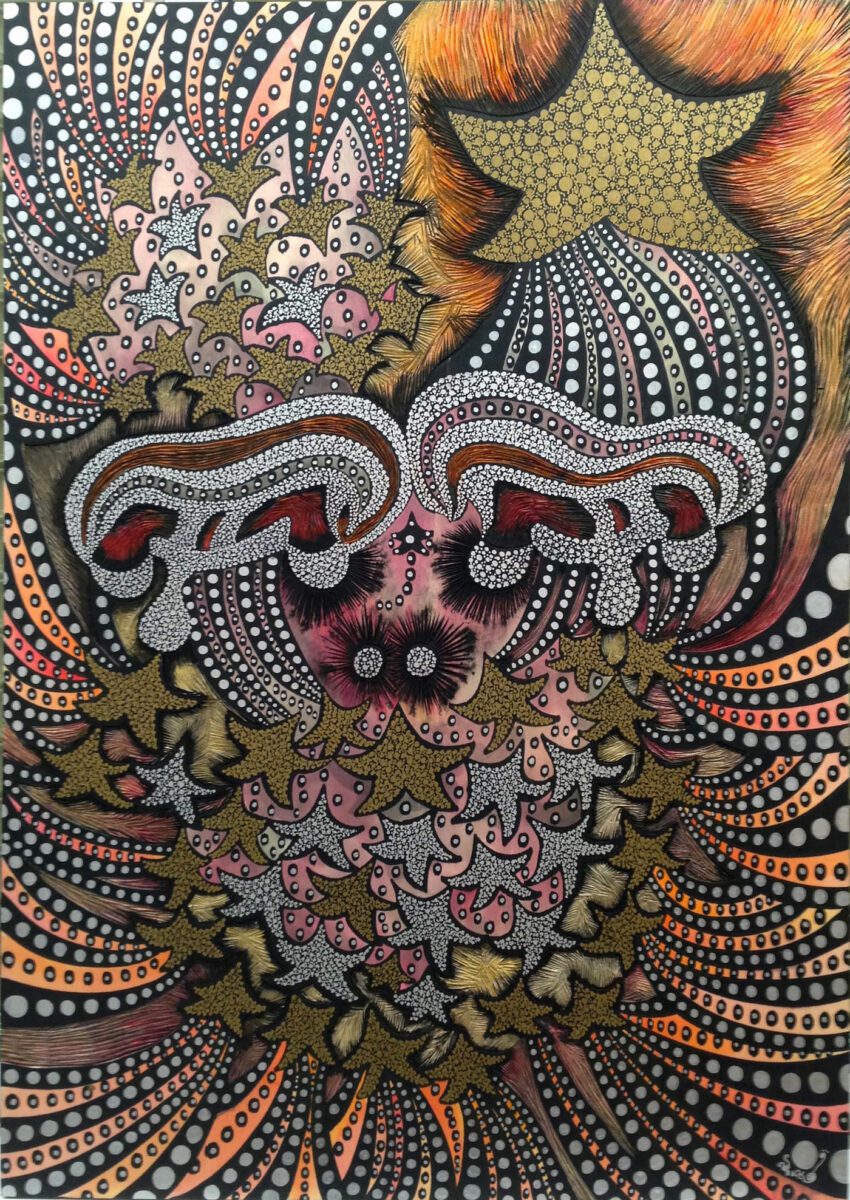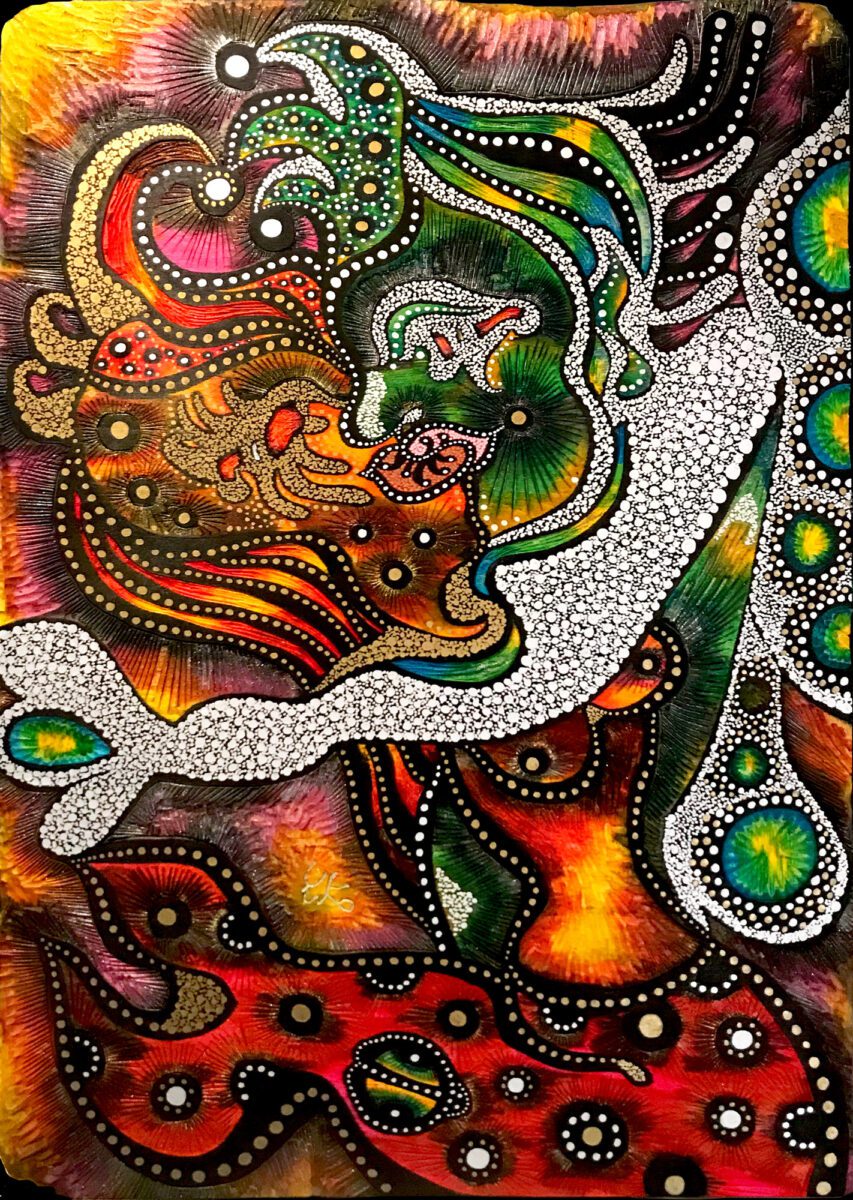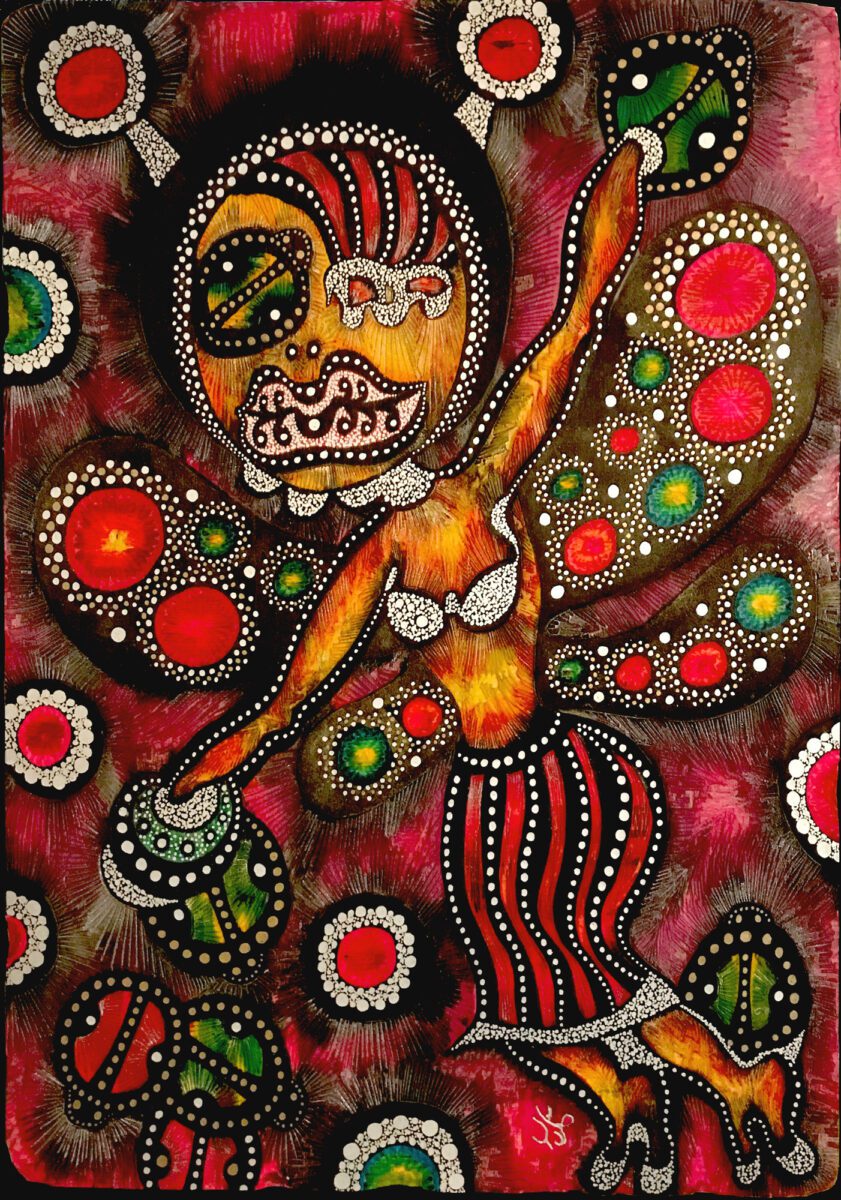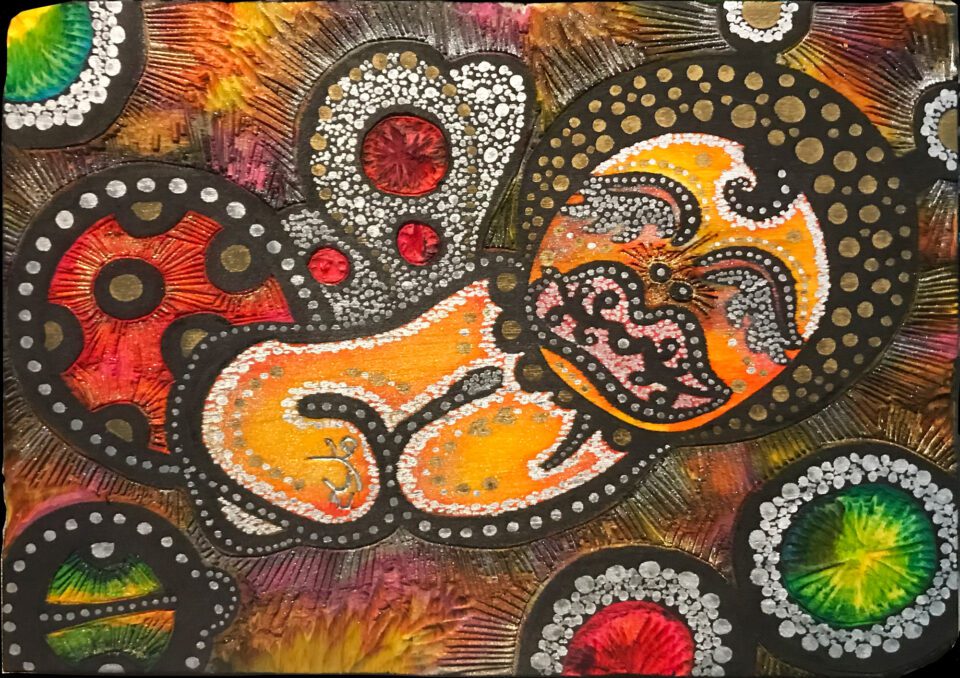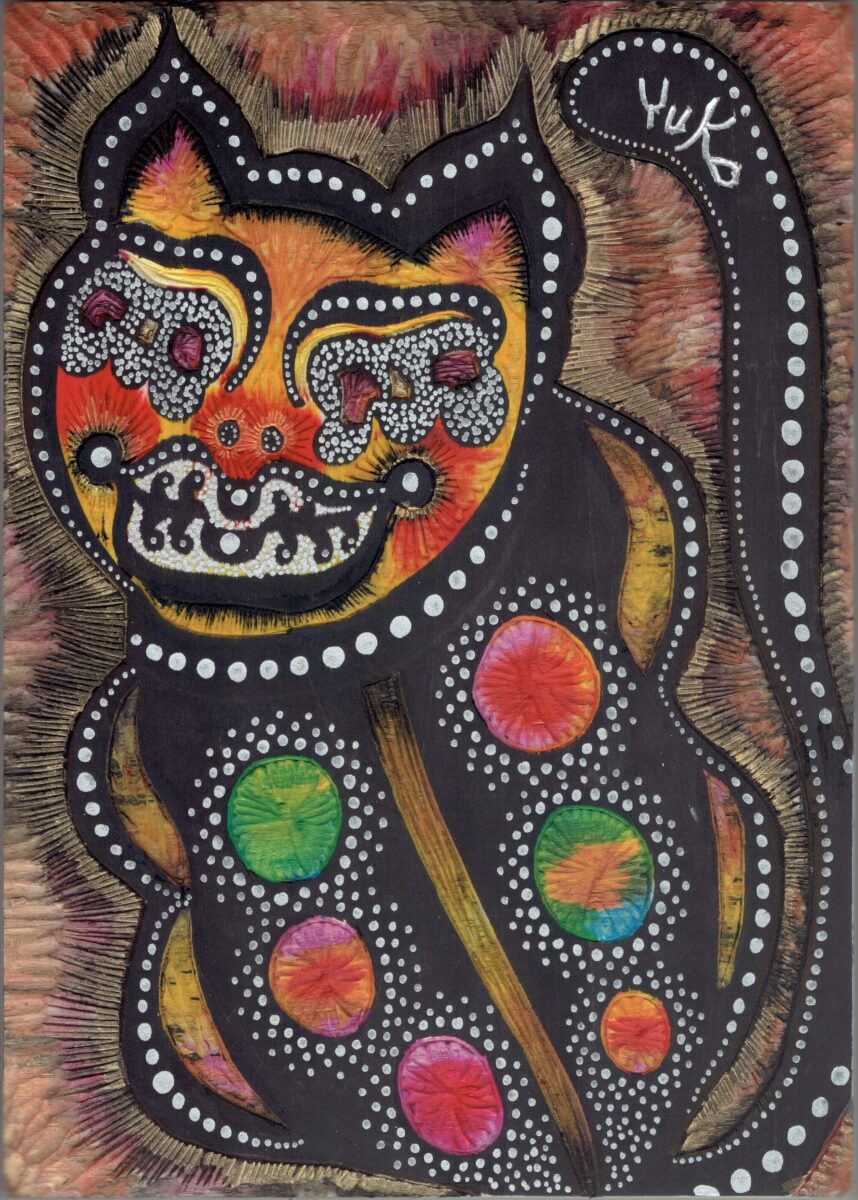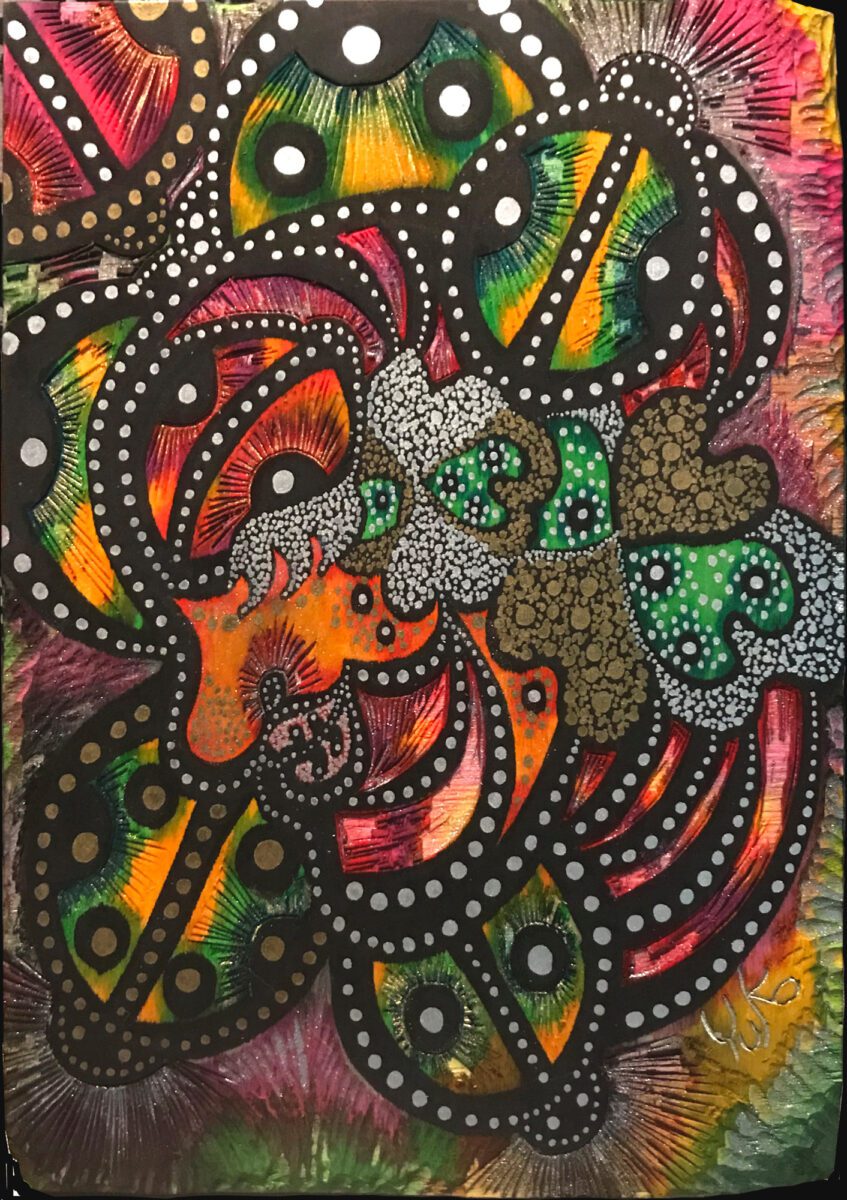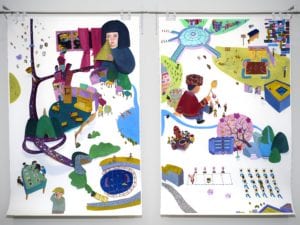“Today, when so much information is being circulated, what we actually feel is almost unfathomable.” Yuko Mizobuchi’s works, as such, are devoid of explanation. She seeks to communicate through the subconscious on what she describes as a “neo-primitive” level. Mizobuchi has exhibited work at numerous shows throughout her native Japan and is currently preparing for the Tokyo International Art Fair, 7-8 June.
A: Today, information is circulated at an unprecedented rate. How does contemporary art help to alleviate this influx of data?
YM: I believe that the role of art remains unchanged since human beings first recognised the concept of art. I think the main role of art is to get back to the neutral state of human beings from the primitive. The distribution of information will continue to increase. But there is a limit to what “ability to process the information” people have. Modern art may exist for that balance and control.
A: What are the primary inspirations for your work?
YM: I think that all inspiration comes from all over the world, both visible and invisible in every sense. I send it out through my filter and give it back to the world.
A: Where and how did you learn the skills of sumi?
YM: I learned Japanese Calligraphy SHODO when I was young. It’s already a part of my style so I don’t think anyone cares that much about it when I show my works in Japan. However, when I display my work outside of Japan, people note that I have incorporated the sumi culture into my production style.
A: You define your practice as ‘neo-primitive’. Can you expand on this idea? YM: I think of it as a memory of human genes from the ancient time of continuous sleep. “Neo-primitive” is an activity that awakens the important senses of all living things and restores the power of imagination. I think that people in modern society seek too much explanation and understanding. I feel that people today are losing their ability to imagine important things because of that.
A: How far do you believe that art should not need explanation? How do you think this might affect curation/exhibition design?
YM: I don’t really think there is any need to explain the work. I think that art is about being as it is. Art is not about understanding what it is. Paradoxically, if it can be explained, it doesn’t have to be art. When you think about who art is for, you don’t really need the artist’s name or title.
A: You will be exhibiting at Tokyo International Art Fair this month. What work will you display and what are you most looking forward to about the experience?
YM: I’m currently finishing a big new piece called The Glow of Life for the art fair. In Japan, there are very few opportunities to present the works of independent artists to people all over the world. So I’m really looking forward to seeing how people react to my work.
A: What do you have planned for the future?
YM: I want more Japanese independent artists including myself to display their work to the world. For that purpose, we are currently constructing a new art gallery in Hachioji, Tokyo. It’s scheduled to open next spring.
Visit the artist’s website at www.brain-brunn.com/mizoyuuu_e.html
For further information regarding the Tokyo International Art Fair, visit www.tokyoartfair.com
The work of Yuko Mizobuchi appears in the Artists’ Directory in Issue 89 of Aesthetica. To pick up a copy, click here to visit our online shop.



